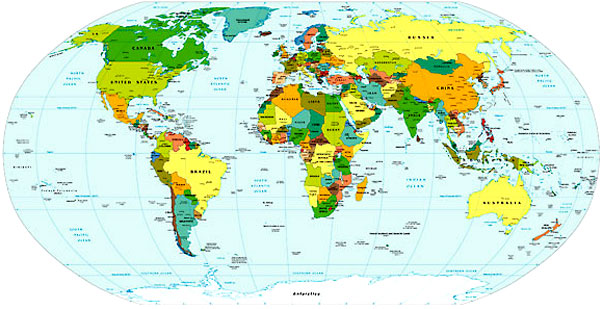 Even though I’m really too young to remember it—and was born in the wrong part of the world for it to have made a huge impact—somehow the name “Nicaragua” still automatically conjures the words “Sandanistas” and “Contras.” Though that’s over, it’s still the first thing that comes to a lot of people’s minds—such that, when I was considering getting to Nicaragua earlier this year when I was already spending time in Panama and Costa Rica, I checked a Lonely Planet guide that immediately said: yes, it’s safe to go there now. Also, I called my mum and said I was interested, and she too had the pause. It’s a natural reaction, I guess: people think of the last time the country penetrated the awareness of people all over the world. But today I don’t want to dwell on that so much as wish Nicaraguan’s everywhere a happy Independence Day. Yes, it’s a bumper day, as all of Central America broke away from Spain at the same time as the Captaincy General of Guatemala before other manifestations of Central America gave way to the current nations we are familiar with today.
Even though I’m really too young to remember it—and was born in the wrong part of the world for it to have made a huge impact—somehow the name “Nicaragua” still automatically conjures the words “Sandanistas” and “Contras.” Though that’s over, it’s still the first thing that comes to a lot of people’s minds—such that, when I was considering getting to Nicaragua earlier this year when I was already spending time in Panama and Costa Rica, I checked a Lonely Planet guide that immediately said: yes, it’s safe to go there now. Also, I called my mum and said I was interested, and she too had the pause. It’s a natural reaction, I guess: people think of the last time the country penetrated the awareness of people all over the world. But today I don’t want to dwell on that so much as wish Nicaraguan’s everywhere a happy Independence Day. Yes, it’s a bumper day, as all of Central America broke away from Spain at the same time as the Captaincy General of Guatemala before other manifestations of Central America gave way to the current nations we are familiar with today.Browsing as I do when I write these entries, I’ve just found a photograph of 6000 year old footprints that have been preserved in volcanic mud—yes, they’re human. I always knew I loved volcanoes—but seeing preserved footprints makes me love volcanoes even more. Nicaragua has been home to humans for at least six thousand years, and we’re familiar with the arrival of the Spanish in the early 16th century. Yes, the indigenous population was devastated by their battles with the Spaniards.
After independence from Spain, Nicaragua did the same as its neighbours and first became part of the Mexican Empire, and then joined the Federal Republic of Central America, before becoming a completely independent republic in 1838. There was a region of the Mosquito Coast on the Caribbean that the United Kingdom still claimed, and eventually this was annexed to Nicaragua, creating the area that makes up the country today. Oh, and early in their independent nationhood Nicaragua was visited by one William Walker from the US, who set himself up as president—and was quickly driven out. I guess an interloper can help foster a sense of nationhood.
 We all know about the Panama Canal (I am in love with the Panama Canal) but not as many people know that before the Panama Canal came into being, there had been proposals floating around for years for the Nicaraguan Canal—and, in fact, they are still around. In the past few years the government has brought the idea back, wanting to create the canal, and make it larger than the Panama Canal (that is, wider) to handle the ships that are “Post-Panamax” in size.
We all know about the Panama Canal (I am in love with the Panama Canal) but not as many people know that before the Panama Canal came into being, there had been proposals floating around for years for the Nicaraguan Canal—and, in fact, they are still around. In the past few years the government has brought the idea back, wanting to create the canal, and make it larger than the Panama Canal (that is, wider) to handle the ships that are “Post-Panamax” in size. Canals aside, Nicaragua has had a problem with military dictatorships over the years—even before the Nicaraguan Revolution turned things upside down. And then came the 1980s. Iran-Contra scandal anyone?
Like neighbouring Costa Rica, Nicaragua is an excellent place to go if you like turtles. They come ashore at the same time and at the same place each year to lay their eggs. Turtles are amazing.
Today’s Nicaraguan poem is by Ernesto Cardenal. Once again I thank the Anthology of Contemporary Latin American Literature 1960-1984.
Epitaph for the Tomb of Adolfo Baez Bone
They killed you and they did not tell us where they buried your body,
but since then all of the national territory is your
grave;
or rather: in each palm of the national territory where your body
is not found, you were re-born.
They believed they were killed you with an order of “Fire!”
they believed they were burying you
and what they were doing was burying a seed.
—Ernesto Cardenal
translated by Wayne H Finke
from Anthology of Contemporary Latin American Literature 1960-1984


No comments:
Post a Comment